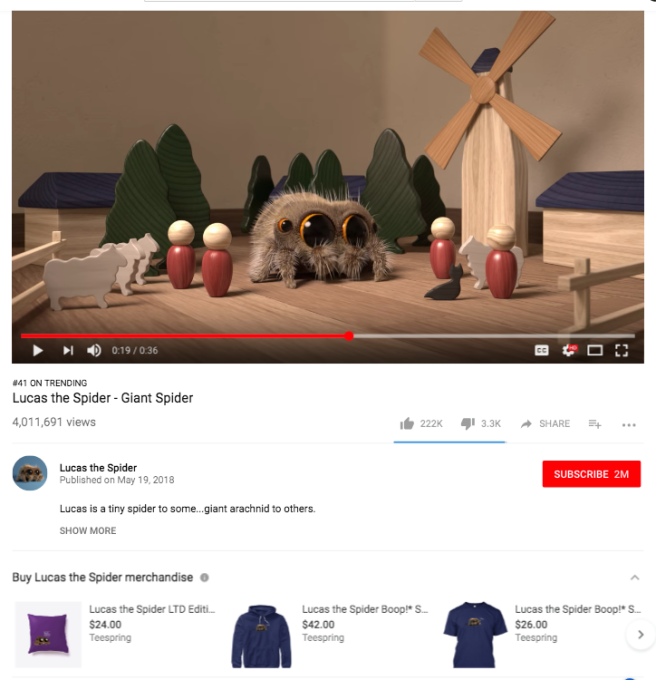New Service Lets YouTubers Sell Swag From Video Pages
In a Nutshell
- • The new merch service displays branded products in a shelf below videos –fans click on items to purchase.
- • Teespring and YouTube get a cut of the sales.
YouTube just took a big step into the promotional products industry – and boosted a competitor to traditional distributors in so doing.
The San Bruno, CA-based company announced last week that creators with more than 10,000 fans can sell branded merchandise directly through their channel on the popular video sharing website. Teespring, a web-based custom merchandise platform, will provide the fulfillment. Creators will be able to offer more than 20 merch items with their custom branding, including T-shirts, phone cases and hats.
As part of the service, branded items will appear in a shelf below participating creators' videos. To buy, a fan simply clicks on a product image in the shelf and is re-directed to Teespring, where they purchase the item. A number of media outlets reported that some YouTube creators already had success with the new swag service during beta testing. The creator of Lucas the Spider, for example, made more than $1 million in profit in about three weeks after selling a plush version of Lucas through the YouTube/Teespring service.

According to Teespring, YouTubers that sold through the merch shelf during beta testing experienced an 82% success rate. In fact, Teespring said conversions from views to sales tested at 2-½ times higher than with the typical YouTuber process for pitching merch on the platform, which essentially involves providing links to online destinations where creators' swag can be bought. Bottom line: It all translated into 25% more units sold per participating user in the limited beta group, data showed.
Given such numbers, it's not a surprise that other YouTubers were keen to get in on the action after YouTube moved to full rollout late last week.
Still, there was some backlash against YouTube's decision to partner with Teespring, which has been at the center of controversy for failing to detect that independent creators were selling everything from swastika/Nazi gear to pro Dylann Roof T-shirts on its platform.
Meanwhile, some critics noted that certain YouTubers already have merch partnerships with other companies and might not desire to use Teespring. YouTube is not requiring creators to use the on-page merch shelf offering, meaning video makers can still plug links to swag-buying destinations as has been done. Admittedly, that might put such creators at a disadvantage. Even so, YouTube is reportedly looking to add more online custom product providers from which creators can sell merch directly through its platform.
For those interested in the financial mechanics, it appears Teespring will retain a flat price per item sold. YouTubers will be able to set the pricing on products so there is potential for mark-up on popular products, which could possibly lead to substantial profit. Teespring's cut can vary per item and on quantity sold. YouTube receives a commission on the sales, but did not reveal the specifics of its compensation.
For Teespring, the partnership with YouTube is a huge win. Laying employees off amid difficult times a few years ago, the web-based merch seller now stands ready to benefit from a potentially massive new revenue channel. Could the exposure Teespring will gain threaten at least some sales for traditional distributors? Could the YouTube/Teespring partnership weaken distributors' ability to compete for the business of YouTubers selling merch? We'll be interested to see how things play out.